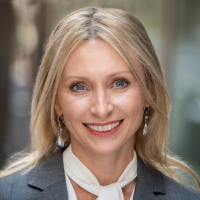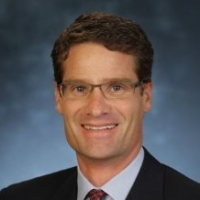
Tuesday, October 25
Agenda
Keynote Speaker #1 – Industry Leading Corporate
An industry leader in utility-scale storage development will review the current state of the market and what needs to happen from a legislative point of view to help scale up the next generation of energy storage projects. The speaker will also discuss a forward-looking view of the battery storage pipeline as it matures supporting solar/wind projects in addition to grid enhancement for the coming EV transition.
Panel #1 – Energy Transition & Use Cases
Energy storage is now a major fulcrum to the energy transition; not only to assist intermittent resources like solar and wind, but also to help scale up the charging infrastructure necessary for growing EV adoption:
- How has traditional lithium-ion battery energy storage system (BESS) evolved from a pricing and technology standpoint?
- What are the greatest drivers of energy storage today?
- With Global EV sales now surpassing 6.6M vehicles, how is the energy storage marketing catching up to service new growth in areas?
- How is energy storage being used as a transmission asset or grid-enhancing technology?
- How is CAISO starting to innovate in large-scale storage, such as the 1 GW+ projects currently being developed in the market?
Welcome Drinks Reception & Networking
Sponsored by Marathon Capital
Wednesday, October 26
Agenda
Panel #2: Project Hurdles & Solutions
The demand for storage continues to accelerate throughout the West Coast and other markets as utility-scale RFPs increasingly look for both co-located ad standalone projects. However, energy storage developers are vying for lithium at a time when EV adoption is increasing and competing with demand. There is also a global shortage in nickel which is often used to deliver higher energy density and greater storage capacity for batteries:
- What are the key obstacles today with building behind-the-meter (BTM) and/or front-of-the-meter (FTM) energy storage systems?
- Why are state and local tax incentives important to storage projects, and how do you get them?
- How are the interconnection logjams now surfacing at NYISO, CAISO and PJM driving up costs for developers?
- How has the supply chain crisis impacted delivery schedules and how are developers navigating other challenges, such as the Ukraine-Russian war and lithium storage?
- From an economic standpoint, do standalone storage systems work vs. co-located, or will an ITC for standalone storage be needed to truly scale?
Networking Coffee Break
Panel #3 – Emerging Storage Technology & Equipment
The vast majority of energy storage systems are still utilizing lithium-ion four-hour duration batteries, however there is growing demand for longer duration alternatives. Panelists will discuss:
- What policy and financial support mechanisms exist at this juncture to support long-duration energy storage (CAES or flow batteries) and where does it need to go?
- Emerging metals such as vanadium, via Largo and Redflow, are starting to make their way to the states, and metal hydrogen batteries, such as EnverVenue are gaining acceptance amongst US storage developers, but what are the hurdles and obstacles toward wide deployment?
- What domestic options for Lithium are being pursued and how long will it take for meaningful production to help strained supply chains?
- How has the emergence of DERs and VPPs to help provide capacity for system operators impacted by the energy storage market?
Lunch
Panel #4 – Contracted Revenues vs. Merchant Risk
Developers have a variety of possible revenue streams to choose from when developing energy storage projects. There is merchant risk which seems to thrive in ERCOT, but also a series of contracted and partially contracted revenue streams through the likes of tolling agreements, resources adequacy agreements and traditional PPAs. There are also market hedges to consider. Panelists will debate the following topics:
- How are tolling and RA agreements different from standard bisbar PPAs, and what are the advantages in terms of one over the other?
- What factors into the discussion when developers walk through merchant storage vs. contracted revenue streams?
- What does this mean for the capital structure in terms of providing equity and debt on the project?
- What projects lend themselves more favorably to merchant storage compared to contracted revenue streams and is this sustainable?
- How do developers consider merchant revenue as traditional arbitrage opportunities become scarcer are more storage connects to the grid?
- What are the best and worst practices in power modeling for energy arbitrage?
Panel #5 – Platform Building & Project Finance
The deal flow involving storage projects and platforms is rarely a straight line compared to the buyouts occurring in solar and co-located platforms. Broad Reach reached a deal to sell 50% of its equity to Apollo, while securing a multi-layered transaction with a number of parties to finance its platform. Panelists today will look at options along the following lines:
- What are the financing considerations needed for solar + storage project pipelines?
- What other enhancements can be considered in standalone storage to achieve a financeable project and which lenders have had the most success in funding standalone development?
- Along with solar devco platforms, there are also storage platforms being shopped in the market. What are the platform building considerations that storage developers require opposed to solar? What are the risks to valuation for buyers of these platforms?
- Utility-scale platforms like Broad Reach and Intersect have opted into larger transactions, where there is an equity transfer, but also a large debt slug to help cover a portfolio of projects. Is that a preferred route vs. a straight M&A transaction? And if so, why or why not?
Closing Drinks Reception & Networking
Sponsored by Keybanc Capital Markets






































































